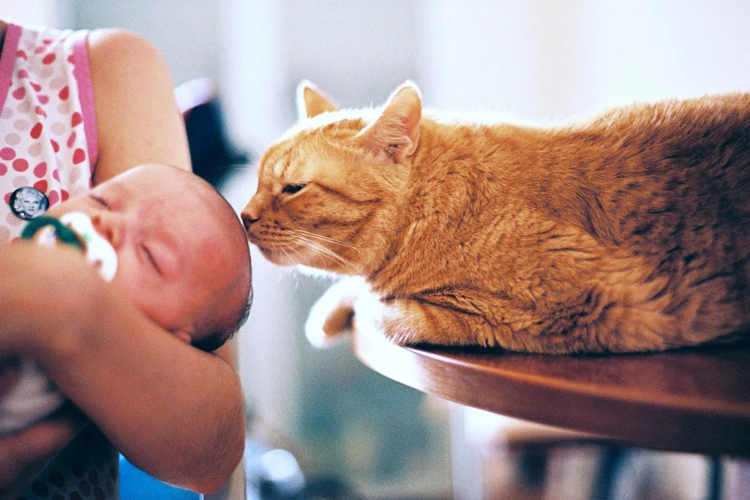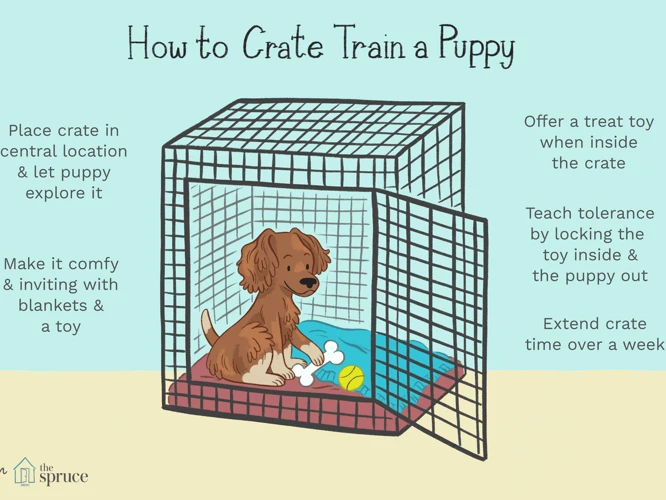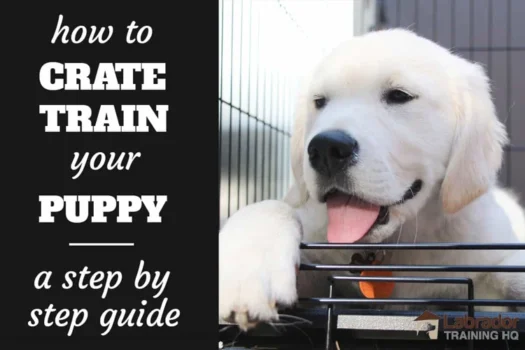Introduction

Bringing a new California Spangled kitten home is always an exciting experience, but it also comes with a great deal of responsibility. As a new pet parent, you want to provide your furry friend with a safe and comfortable living environment. One of the most important tools you can use to achieve this is crate training. Crate training is a method of teaching your California Spangled to view the crate as a secure and pleasant space where they can feel safe and settled. In this comprehensive guide, we’ll explore all the essential elements of crate training to help you create a stress-free and happy living space for your feline friend.
About Crate Training
Crate training is an essential part of a cat owner’s life. It is an effective way to provide your pet with a secure environment. It is also a way to ensure a comfortable and difficult-to-escape play area when you are away from home. Crate training could be a real lifesaver if you are traveling with your cat. It is also a way to make sure that your cat is safe while resting or recovering from surgery.
It is crucial to introduce your California Spangled cat to the crate gradually. Your pet must become familiar with the crate before you start training him. One way to make the crate a less scary place is to place toys and treats inside. You should let your cat explore the crate and get used to the smell and feel of it.
There are different types of crates, but the most popular ones are plastic or wire crates. It would be best if you chose the right size and material for the crate to make it more comfortable for your California Spangled. A comfortable crate is a must-have accessory for crate training.
It is important to note that crate training should never be used as a form of punishment. Instead, crate training should be a positive experience that should be introduced gradually. You should never force your cat into the crate or leave him inside for extended periods.
Crate training is just one aspect of California Spangled training, and you can learn more about other cat training techniques. You can find useful information on clicker training, basic commands, litter box training, leash walks, and stopping furniture scratching. It is important to remember that cats are unique animals and may have different training needs. The key is to be patient, consistent, and positive in your approach.
Crate training can be a great way to provide your California Spangled with a safe and comfortable environment. By following the correct size, material, and training techniques, you can ensure that your pet is happy and stress-free.
Choosing the Right Crate

As you start your journey to crate train your California Spangled, it’s important to choose the right crate that will provide comfort and security for your furry friend. The crate will be your cat’s personal space, so it’s critical to make sure the crate is tailored to fit your cat’s needs. In this section, we’ll help you choose the right type of crate for your California Spangled by discussing the ideal size and materials for the crate. Proper crate selection is an important first step in crate training your cat, so take the time to read this carefully before moving on to the actual training. If you’re also looking to train your feline friend in basic commands, we have an article for that too! Check out “Basic Commands for Your California Spangled” for more information.
The Right Size
When crate training your California Spangled, it’s important to choose the right size crate for your feline friend. A crate that’s too small can make your cat feel cramped and uncomfortable, while one that’s too large may not provide the coziness your cat desires. The size of your cat should be well-matched to the size of the crate.
But how do you determine the right size? To start, you’ll need to measure your California Spangled. Measure from the tip of their nose to the base of their tail and add a few inches to that measurement. This will give you a good idea of the minimum length of the crate your cat will need.
Next, measure your cat’s height from the floor to the highest point of their back. Again, add a few inches to this measurement. This will give you the minimum height of the crate your cat will need.
Once you have these measurements, compare them to the sizes available on the market. Whether you’re purchasing in-store or online, you should look for a crate that has enough room for your cat to stand up, turn around, and lie down comfortably. It’s also important to note that cats generally prefer cozy spaces, so a crate that’s too large may not be as appealing to them.
Remember: It’s better to opt for a slightly smaller crate that fits your cat snugly than a larger one. Crates that are too big may encourage your cat to use one end as their washroom.
| Size | Dimensions | Weight of Cat |
|---|---|---|
| Small | 24″L x 18″W x 19″H | Up to 25lbs |
| Medium | 30″L x 19″W x 21″H | Up to 40lbs |
| Large | 36″L x 23″W x 25″H | Up to 70lbs |
If you’re unsure about what size to choose, consider the weight of your cat. The above table can assist you with finding the best fit.
By selecting the right size crate, your California Spangled will feel comfortable and secure in their new safe space. If you want to learn more about clicker training your California Spangled or socializing your California Spangled for basic training, be sure to check out our other guides.
The Right Materials
When it comes to choosing the materials for your cat’s crate, it’s important to consider both the comfort of your cat and the durability of the crate. Wire crates are a popular choice as they are sturdy, well-ventilated, and easy to clean. They also give your cat a clear view of their surroundings, which can provide comfort and reduce anxiety. However, it’s important to check that the wire crate you choose has a secure latch and is free from any sharp edges or points that could injure your cat.
If you’re looking for a more cozy and enclosed crate, plastic crates may be a better choice. These crates can be good for cats who prefer a den-like environment as they feel more concealed and offer more privacy. They are also generally lighter and easier to transport. However, plastic crates may be more difficult to clean and may not be as well-ventilated as wire crates.
When choosing a crate, make sure to also consider the size of your cat. A crate that is too small can be uncomfortable and may cause your cat to feel trapped and anxious, while a crate that is too large can make your cat feel insecure and may lead to accidents. Use a measuring tape to measure your cat’s height and length and choose a crate that gives them enough room to stand up, turn around, and lie down comfortably.
In addition to considering the materials and size, you may want to also think about any additional features that could provide comfort to your cat. For example, you could consider adding a soft blanket or bed to the crate to make it more cozy. It’s also important to make sure the crate is well-ventilated and allows for proper air flow.
Ultimately, the materials you choose for your cat’s crate will depend on your cat’s individual needs and preferences. Experiment with different options and observe how your cat reacts to them, making adjustments as necessary. With patience and consistency, you can find the right crate for your California Spangled and create a comfortable and safe space for them to call their own.
If you want more tips about cat training, you can read my article about litter box training, leash walking, or preventing furniture scratching.
Introducing Your Cat to the Crate

Bringing your California Spangled cat to their new crate can be a daunting task, but introducing them to it properly can ease the transition. This process requires patience and care to ensure that your feline companion associates the crate with comfort and security. In this section, we’ll explore effective strategies for introducing your cat to the crate, including ways to make it comfortable and enticing, getting them used to spending time inside, and encouraging positive associations with the crate. Let’s dive in!
Making it Comfortable
When introducing your California Spangled to their crate, it’s important to make the experience as pleasant as possible. Here are some tips to make the crate comfortable for your furry friend:
- Add soft padding: Place a comfortable blanket or cushion at the bottom of the crate. This will make it a cozy and comfortable spot for your cat to relax in. If you live in a colder climate, consider adding a small heating pad to the crate to keep your cat warm.
- Place the crate in a calm area: Avoid placing the crate in a noisy or high traffic area. Instead, choose a quiet and peaceful spot in your home where your cat can relax and feel safe. You can also cover the crate with a blanket or towel to create a cozy hiding spot for your cat.
- Make it smell like home: Put a piece of your cat’s favorite blanket or towel inside the crate. The familiar scent will help your cat feel more comfortable and relaxed.
- Add some toys: Leave a few of your cat’s favorite toys inside the crate. This will keep your cat entertained and help them associate positive feelings with the crate.
By taking these steps, you can create a comfortable and inviting environment that will make your California Spangled more willing to spend time in their crate. Remember, the more positive the experience, the more likely your cat will be to accept and enjoy their crate.
Feeding in the Crate
One effective way to help your California Spangled enjoy their crate is by feeding them in it. This will help them associate the crate with positive experiences and will make it more likely that they will enter the crate voluntarily in the future.
To begin, choose a time when your cat is hungry and place their food bowl in the crate. Make sure that the crate is well-ventilated and that the door is securely fastened in the open position to prevent accidental lock-ins.
Do not force your cat into the crate or close the door while they are eating. Allow them to eat at their own pace, and praise them for entering the crate and calmly eating from their bowl.
Over time, you can gradually move the food bowl closer to the entrance of the crate and then inside the crate. Once your cat is comfortable eating inside the crate, you can start closing the door while they eat. Open the door as soon as they are finished eating.
Using a feeding schedule can also be helpful in crate training your California Spangled. If they have set meal times, they will be more likely to enter the crate in anticipation of their meal. This also helps to establish a routine and makes the crate a positive part of their daily routine.
Remember, patience is key when it comes to crate training. It may take several days or even weeks for your cat to become comfortable with eating in the crate. Be sure to stay consistent with the feeding schedule and reward good behavior with treats and praise.
Crate Training Techniques

Now that you have chosen the right crate for your California Spangled and introduced them to it, it’s time to start the actual crate training process. Crate training techniques can vary, but by incorporating positive reinforcement and progressive training, you can successfully crate train your beloved feline. It’s important to be patient, consistent, and educated on the process to make the experience as stress-free as possible for both you and your cat. Let’s dive into some effective crate training techniques to help your California Spangled feel comfortable and safe in their crate.
Progressive Training
One effective technique for crate training your California Spangled is progressive training. This involves gradually increasing the amount of time your cat spends in the crate until they’re comfortable being inside for longer periods.
Step 1: Start by placing your cat’s food bowl just inside the open crate. Encourage your cat to walk inside to eat, but don’t close the door yet.
Step 2: After a few meals, start closing the door for a few seconds while your cat eats. Gradually increase the amount of time the door is closed while your cat eats.
Step 3: Once your cat is comfortable eating in the crate with the door closed, start leaving your cat inside with the door closed for short periods of time while you’re home. Slowly increase the time your cat is inside the crate with the door closed.
Step 4: Once your cat is comfortable being inside the crate with the door closed for extended periods of time while you’re home, start leaving your cat in the crate while you’re out of the house. Start with short periods of time and gradually increase as your cat becomes more comfortable.
Step 5: Finally, start leaving your cat in the crate at night while you sleep. Make sure the crate is comfortable and has familiar items, such as a favorite blanket or toy.
It’s important to always provide positive reinforcement during progressive training. Reward your cat with treats, praise, and affection when they enter and remain calm in the crate. Don’t force your cat into the crate or punish them if they resist – this can lead to negative associations with the crate.
Remember, every cat is different and may progress at different rates. Be patient and consistent with your training, and your California Spangled will soon become comfortable and content in their crate.
Positive Reinforcement
Positive reinforcement is a key aspect of successful crate training for your California Spangled cat. This technique involves praising and rewarding your cat for exhibiting desirable behavior inside the crate. Here are some positive reinforcement tips to help ensure a successful training experience:
| Tips | Description |
|---|---|
| Use Treats | Offer your cat treats when they go near the crate, step inside it, or are calm while inside it. Gradually increase the amount of time your cat spends inside the crate before giving them a treat. |
| Be Consistent | Consistency is key to success. Reward your cat with treats every time they show positive behavior while inside the crate. |
| Use Verbal Praise | In addition to treats, praise your cat verbally when they exhibit positive behavior in the crate. Use a happy and upbeat tone of voice. |
| Close the Door Slowly | When your cat is comfortable being inside the crate, begin to close the door slowly. If your cat starts to show signs of distress, open the door immediately. As your cat becomes more comfortable, gradually leave the door closed for longer periods of time. |
| Don’t Punish | Avoid scolding or punishing your cat for exhibiting negative behavior. Instead, redirect them to positive behavior and reward them when they exhibit it. |
Remember, it is important to be patient and consistent when using positive reinforcement. Over time, your California Spangled cat will learn to associate the crate with a positive experience and will be more comfortable spending time inside it.
Potty Training
When it comes to potty training your California Spangled, it’s important to have a consistent routine and a lot of patience. Using a crate can be an effective tool for potty training, but it needs to be done correctly to avoid confusion and accidents.
Step 1: Take your cat to the litter box frequently
Cats tend to be clean creatures, so they may be hesitant to use their crate as a bathroom. To help them understand where they should go, take them to the litter box frequently throughout the day, especially after meals and naps.
Step 2: Reward them for using the litter box
When your cat uses the litter box, give them plenty of praise and a treat as a reward. This positive reinforcement will help them understand that using the litter box is a good thing.
Step 3: Monitor their behavior
When you first start crate training, it’s important to monitor your cat’s behavior closely. If you notice that they are meowing or pacing, they may need to go outside. Take them to the litter box immediately, and reward them if they use it.
Step 4: Gradually increase crate time
As your cat becomes more comfortable with using the litter box, you can gradually increase the amount of time they spend in their crate. Start with short periods of time, such as 15-20 minutes, and gradually increase the time as your cat becomes more accustomed to the crate.
Step 5: Take them to the litter box immediately after crate time
After your cat spends time in their crate, take them to the litter box immediately. This will reinforce the idea that the litter box is the appropriate place to go to the bathroom.
To keep track of your cat’s progress, use an html table to document what time they went to the bathroom and whether or not they used the litter box. This will help you identify any patterns and adjust your training routine as needed.
| Date | Time | Bathroom | Used Litter Box? |
|---|---|---|---|
| 1/1/21 | 8:00am | Urine | Yes |
| 1/1/21 | 12:00pm | Bowel Movement | No |
| 1/1/21 | 3:00pm | Urine | Yes |
Remember, potty training takes time and patience. By using positive reinforcement and a consistent routine, your California Spangled will soon learn the appropriate place to go to the bathroom, whether it’s the litter box or their crate.
Common Mistakes to Avoid

When it comes to crate training your California Spangled cat, there are several common mistakes that cat owners tend to make. Avoiding these mistakes can make the crate training process smoother for both you and your cat.
Don’t Rush or Force Your Cat into the Crate: One of the biggest mistakes pet owners make is trying to force their cat into the crate before they are ready. This can create negative associations with the crate, making it harder to train your cat to stay in it. Instead, encourage your cat to explore the crate at their own pace and use positive reinforcement to make it a comfortable and fun space.
Don’t Leave Your Cat in the Crate for Too Long: It’s important to remember that crate training is not a substitute for human interaction and play time. Leaving your cat in the crate for extended periods of time can cause anxiety and make them feel isolated. Gradually increase the time your cat spends in the crate, and make sure they have plenty of playtime and interaction outside of the crate as well.
Don’t Use the Crate as Punishment: Using the crate as a form of punishment can create a negative association with the space. Your cat should view their crate as a safe and comfortable space, rather than a place they are sent to when they have behaved badly. Instead, use positive reinforcement to reward your cat when they enter the crate on their own.
Don’t Forget to Gradually Increase the Time Spent in the Crate: While your goal may be for your cat to eventually spend extended periods of time in the crate, it’s important to gradually increase the time they spend inside. This will help them get used to the space before being confined for long periods.
By avoiding these common mistakes, you can create a positive and successful crate training experience for your California Spangled cat. Remember to be patient, use positive reinforcement, and make the crate a comfortable and enjoyable space for your furry friend.
Troubleshooting

If you’re experiencing difficulties with crate training your California Spangled, don’t panic! Like any new training technique, there may be some bumps in the road. However, it’s important to understand the reasons behind any challenges you’re facing and to address them accordingly. In this section, we’ll explore some common issues you may encounter during crate training and offer solutions to help you and your feline friend succeed. Let’s dive in and troubleshoot together!
Separation Anxiety
Separation anxiety is a common issue that some cats may face during crate training. This happens when your California Spangled becomes anxious and stressed when left alone or separated from their human or furry siblings. Some signs of separation anxiety in cats include excessive meowing or crying, destructive behavior, and urinating or defecating outside the litter box.
Here are some tips to help your cat deal with separation anxiety during crate training:
- Gradual introduction: Introduce the crate to your cat slowly and gradually. You can start by leaving the crate door open and placing treats or toys inside. Let your cat explore the crate on their own terms without any pressure. When they are comfortable being inside, you can start closing the door for short periods of time.
- Positive reinforcement: Use positive reinforcement techniques to encourage your cat to feel comfortable in the crate. Reward them with treats or praise every time they enter the crate voluntarily. This will help your cat associate the crate with positive experiences.
- Comfort items: Provide your cat with comfort items such as a soft blanket, toy, or a piece of clothing with your scent on it. This will help your cat feel safe and secure when left alone in the crate.
- Calming supplements: If your cat is extremely anxious, you can consult your veterinarian about using calming supplements such as pheromone sprays or diffusers. These can help alleviate stress and anxiety in cats.
- Training sessions: Short training sessions throughout the day can help your cat get used to being alone and in the crate. Start with short periods of time and gradually increase them as your cat becomes more comfortable.
It’s important to remember that crate training should be a positive experience for your California Spangled. If your cat continues to experience separation anxiety and stress, it’s important to consult with a veterinarian or a professional cat behaviorist for further help.
Crying and Meowing
When crate training your California Spangled, it’s not uncommon for them to cry or meow when they are first introduced to the crate. This can be distressing for both you and your cat, but it’s important not to give in to their cries and let them out of the crate. Here are some tips to help ease your cat’s anxiety:
- Gradual Introduction: Start by leaving the crate open and allowing your cat to explore it at their own pace. Encourage them with toys or treats, and give them time to get used to it before closing the door. Make sure you’re nearby while they’re exploring so they feel safe and secure.
- Positive Reinforcement: Reward your cat for good behavior in the crate. Every time they go into the crate on their own, give them a treat or a toy. This will help them associate the crate with positive experiences.
- Calming Techniques: Play calming music or use a calming spray in the room where the crate is located. This can help your cat relax and feel more comfortable in their crate.
- Patience: Remember that crate training takes time and patience. Don’t rush the process or expect your cat to be comfortable in the crate right away. Be patient and consistent with your training.
It’s important to note that if your cat continues to cry or meow excessively in the crate, it could be a sign of separation anxiety. In this case, it may be best to seek guidance from your veterinarian or a professional animal behaviorist. By following these tips and being patient with your cat, crate training can be a positive experience for both you and your California Spangled.
Aggression
Aggression is a serious issue that may arise during crate training with your California Spangled. It may be due to anxiety, fear, or even territorial behavior. If your cat becomes aggressive during crate training, it’s important to address this immediately and take appropriate action to keep both you and your cat safe.
Here are some techniques to deal with aggression during crate training:
| Technique | How to Do It |
|---|---|
| Stay Calm | It’s important to remain calm when dealing with an aggressive cat. Speak to your cat in a calm and soothing voice. Avoid making sudden movements or loud noises that may frighten your cat. |
| Use Positive Reinforcement | When your cat displays good behavior, reward them with treats, praise or playtime. This will encourage positive behavior and reduce aggression. |
| Redirect Their Attention | If your cat starts to become aggressive, try to redirect their attention to a toy or treat. This will help them associate their crate with positive experiences and reduce any negative associations with the crate. |
| Seek Professional Help | If your cat’s aggression persists, it may be advisable to seek the help of a professional behaviorist or trainer to address the issue. They can help you develop specific training strategies to deal with your cat’s aggressive behavior. |
Remember that aggression is a serious issue that should not be ignored. By remaining calm, using positive reinforcement and redirecting your cat’s attention, you can work towards managing their aggression during crate training. If the problem persists, seeking professional help is always the best course of action.
When and When Not to Use a Crate
Using a crate can be an effective tool for training your California Spangled cat, but it’s important to know when and when not to use it. Crates should never be used as punishment and should not be used as a permanent confinement method. It’s essential to ensure that the crate is only used for a specific purpose and for a limited time.
When to Use a Crate:
1. Toilet training: Using a crate can be helpful when toilet training your California Spangled cat. The idea is to use the crate to set a routine for toilet breaks. If done correctly, your cat will recognize that the crate is the designated area for relieving itself.
2. Traveling: Using a crate while traveling can help keep your cat safe and secure. It is also required by law in many countries when flying with your pet.
3. Time-out: If your California Spangled cat is showing behavioral problems, a crate can be used as a temporary time-out zone. However, it’s important to note that the time-out should not be longer than 15-20 minutes, and that the crate needs to have all the necessary comforts and amenities.
When Not to Use a Crate:
1. Punishment: A crate should never be used as punishment. A crate is supposed to be a safe, comfortable and secure environment for your California Spangled cat and punishment will have a negative effect on their training and on their relationship with you.
2. Long-term Confinement: A crate should not be used as a permanent confinement solution. Using a crate to confine your cat for long periods can be detrimental to its physical and psychological well-being.
3. If Your Cat Hates It: Some cats may never take to the idea of a crate. If your California Spangled cat seems to dislike the crate intensely and is becoming overly stressed, then perhaps this method is not the right one for your pet.
Crates can be an excellent training tool when used correctly. Always be mindful of your cat’s feelings and needs, and never use a crate as punishment. Remember to provide your California Spangled cat with a comfortable and safe environment, and your training efforts will likely be successful.
Conclusion
In conclusion, crate training can be a useful tool for ensuring the safety and well-being of your California Spangled. By following the steps outlined in this guide, you can introduce your cat to the crate, train them to feel comfortable inside, and avoid common mistakes that can negatively impact the training process.
Remember to choose the right sized crate, made from materials that are safe for your cat. Introduce your cat to the crate slowly, making it a comfortable and safe space that they associate with positive experiences, such as meals and treats.
Use positive reinforcement techniques to keep your cat motivated and engaged throughout the training process. Be patient and understanding, and be prepared to troubleshoot any issues that may arise, such as separation anxiety or aggressive behavior.
It is important to note that crate training is not suitable for every cat or every situation. If your cat has a history of anxiety or fear, or if they are exhibiting aggressive behavior towards the crate, it may be best to avoid crate training altogether. As with any aspect of cat care, it is important to assess each situation individually and make informed decisions based on the needs of your individual cat.
Ultimately, crate training can be a valuable tool for cat owners who want to ensure their cat’s safety and provide them with a comfortable and secure space to call their own. By following the guidelines outlined in this article and listening to your cat’s needs, you can successfully crate train your California Spangled and enjoy all the benefits that come with it.
Frequently Asked Questions
1. Can crate training be harmful to my California Spangled?
No, when done correctly, crate training can be a useful tool for keeping your California Spangled safe and comfortable.
2. How long does it take to crate train a cat?
The length of time it takes to crate train a cat can vary, but with consistency and patience, most cats can be trained within a few weeks.
3. Is it okay to leave my California Spangled in the crate for long periods of time?
No, it’s important to remember that the crate is a tool for temporary confinement and not a substitute for human interaction.
4. Can I use any type of crate for my California Spangled?
No, it’s important to choose a crate that is the appropriate size and made of materials that are safe for your cat.
5. How often should I feed my cat in the crate?
You should start by feeding your cat in the crate once per day and gradually increase the amount of time they spend in the crate during meals.
6. What can I do if my cat cries or meows excessively in the crate?
You can try to provide more comfort items in the crate, increase exercise and playtime, and avoid leaving your cat in the crate for extended periods of time.
7. Can I crate train an adult California Spangled?
Yes, crate training can be effective for cats of all ages with the right approach and a little extra patience.
8. What if my California Spangled refuses to go near the crate?
You can try to make the crate more appealing by adding toys, treats, and familiar bedding, and gradually moving it closer to areas of the home where your cat already spends time.
9. Can I use a crate for travel purposes with my California Spangled?
Yes, a crate can be a safe way to transport your cat, but it’s important to take extra precautions and follow guidelines for air travel if flying.
10. Is crate training necessary if my California Spangled never leaves the house?
It’s still important to have a crate available for your cat in case of emergencies or situations that require temporary confinement, such as home repairs or guests with allergies.







